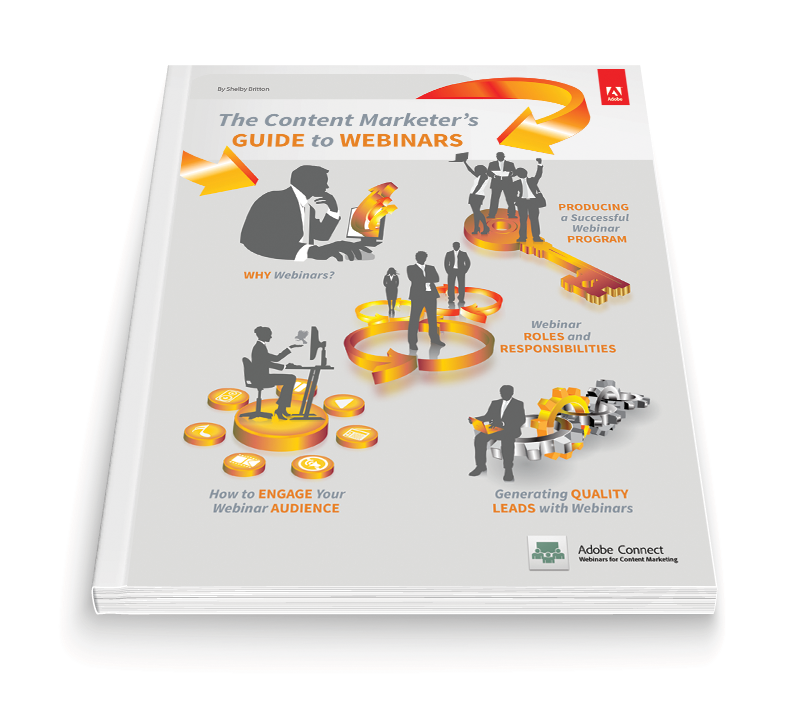Webinars have become wildly popular as a way to increase revenue and generate sales leads. According to Marketing Sherpa’s 2011 B2B Marketing Advanced Practices handbook, an overwhelming 92% of respondents said webinars were one of the most effective means of generating high quality leads.
There’s no doubt webinars take a lot of investment in time and resources, so the question is: how do you make sure you get the most bang for your buck? Let’s take a look at six items that will help you to increase attendance and maximize conversion in your next webinar…
1. Target the right audience.
 According to Ken Molay, founder of Webinar Success, a general open-call webinar typically results in a 33% attendance rate, while a highly targeted webinar can see an attendance rate as high as 65%! The difference? Offering your audience timely, educational, newsworthy content that will help make their life easier. So who are these people and how do you know if they are ready to listen to your message?
According to Ken Molay, founder of Webinar Success, a general open-call webinar typically results in a 33% attendance rate, while a highly targeted webinar can see an attendance rate as high as 65%! The difference? Offering your audience timely, educational, newsworthy content that will help make their life easier. So who are these people and how do you know if they are ready to listen to your message?
The best time to invite someone to a webinar – in terms of the sales cycle – is when they are in the Prospect stage. At this point, they have provided some form of personal information in exchange for content that you’re offering. Prospects are typically in research mode around a purchase and are looking for information to answer their questions and concerns. Thus, it’s important to make your webinar more educational and less of a sales pitch.
Bonus Tip: Lead management software can save a lot of time (and money) in identifying a hot prospective audience for your webinar. With the use of lead scoring, a process whereby a potential buyer is given a score determined by the amount of interaction with your website or other marketing content, the software can help you identify what part of the buying cycle a prospective buyer is in. Lead management software can also engage attendees with more personalized invites and timely reminders. And the best part is that many lead management software programs can integrate directly with most CRM solutions, making it a seamless process.
2. Craft your message and get their attention with an exclusive offer.
In addition to listing the benefits of attending your webinar, make your attendees feel special by having an offer only available to webinar attendees….i.e. a best practices white paper or eBook, a free industry report, or a one-one demo.
Bonus tip: Don’t use gimmicks. Many articles and blog posts out there suggest offering a prize drawing, such as a gift card or iPad, as a way to increase webinar attendance. We highly disagree. The goal of the webinar is to convert warm, high quality leads to your sales team. More often than not, you’ll get sign ups just for the freebie.
3. Getting People to the event.
 In order to get people to your webinar you need to get the word out. Traditionally, email is the most effective way to do this. Using your preferred email platform you create an invite, load up your lead list, and press send. But how do you know you’re sending out the most effective message? A/B testing should be incorporated into all email marketing, especially webinar invites. While an email that generates high open rates is great, if it doesn’t produce the conversion rates you were expecting then it really doesn’t matter much. So, what to test?
In order to get people to your webinar you need to get the word out. Traditionally, email is the most effective way to do this. Using your preferred email platform you create an invite, load up your lead list, and press send. But how do you know you’re sending out the most effective message? A/B testing should be incorporated into all email marketing, especially webinar invites. While an email that generates high open rates is great, if it doesn’t produce the conversion rates you were expecting then it really doesn’t matter much. So, what to test?
Subject and From lines are extremely important and unfortunately sometimes overlooked. Also, placement of your call to action…is it the first thing you see or is it along the bottom? We recommend applying A/B testing regularly so you can get a feel for what your target market prefers. While it will be different for every audience at every organization, the knowledge you collect will make a huge difference in your email conversion rates.
Bonus tip: Another great way to leverage email is to include a short blurb about your event in other outgoing messages, such as newsletters, blog post notifications, even included in signature lines.
Don’t forget to set up confirmation and reminder emails. There are many event management platforms available that allow you set up these communications to go out automatically based on pre-configured triggers, such as completion of a form or a specified time prior to the start of the event, such as 24 hours before go-live.
No doubt social media is another great way to spread the word about your webinar, and with sharing being the central theme for all social media platforms like Twitter and Facebook, this is a great way to reach people that are not in your immediate database. Make sure to keep track of where these new prospects are hearing your message so you know which social media platforms work best for your product.
While the most time consuming by far, adding a call campaign to remind participants about a webinar they have signed up for can drastically improve attendance rates. In a recent experiment, Marketo used a service called Boxpilot which automatically sent out a pre-recorded message about an upcoming event. 967 of 5164 registrants received the voicemail. The result: 48% attendance rate for that group vs. 25.8% rate for the group that was not called.
4. Landing Page and Registration.
Probably one of the most crucial points in whether a person will sign up to attend a webinar is when they arrive on the landing page. You’ve captured their attention with your initial message; now let’s make sure to keep them interested!
Just like in your email blasts, the content you have on your landing page is important and should be put to the test with A/B testing. The placement of your call to action is important. Decide whether it’s more impactful to have your registration form at the top vs. the bottom, the number of required fields in the registration form, an additional offer such as a downloadable white paper, or access to relevant on-demand videos.
Bonus tip: Keep your event short and sweet. A large majority of webinars run for a full hour. Generally, there’s a 45 minute presentation followed by a 15 minute Q&A session. An hour is a big chunk of time for someone to take out of an 8 hour work day. Try offering a 30 minute webinar instead; 20 minute presentation and 10 minute Q&A. If you have a lot of content to cover, you could break down your webinar into multiple events over a period of days or weeks. This is an opportunity to keep your audience wanting more without the risk of losing their attention.
5. Easy access to the event.
 This is probably the most critical point in your attendees overall experience. You want to ensure your registrants are able to get into your event without a hassle; therefore the platform you select to deliver your online event is of the utmost importance. Will they need to take time to download third party software or sign in with a password?
This is probably the most critical point in your attendees overall experience. You want to ensure your registrants are able to get into your event without a hassle; therefore the platform you select to deliver your online event is of the utmost importance. Will they need to take time to download third party software or sign in with a password?
Also important to keep in mind when selecting a platform is the flexibility it offers. Whether you decide on a short and sweet 30 minute webinar or an in-depth 90 minute event, it’s important to keep your audience engaged. Don’t let your platform hinder this by limiting your ability to interact with your audience. Features like chat, Q&A, polls & surveys, and resource downloads, when used creatively, can be the deciding factors between a boring webinar and highly engaging one.
6. Follow up.
The best time to follow up with your webinar attendees is within 24-48 hours, when the information is still fresh and the motivation to act is still high. Wait any longer and your message is already being replaced by other priorities.
Start by sending a thank you email to everyone who attended. A good webinar platform will be able to tell you who attended your event. Include any promised information such as the presentation slide deck, event recording, or a special offering (see item 2). This is also a good time to request feedback with a post-event survey. The information provided will determine which prospects your sales team follows up with.
And for those prospects who didn’t attend, they’re not necessarily a lost cause. Perhaps time just was not on their side that day. Send them an invitation to view a recording of your event and follow up with a thank you email as mentioned above. Again, a good webinar platform will indicate who has viewed the recording.
If your event platform offers reporting features, make sure to take the time to review the stats. This information will tell you how long attendees hung around, their answers to any poll or survey questions, even their level of engagement during the event. This information will help you to make any necessary modifications to future presentations.
Next Step.
Do you have a question about online events? Don’t hesitate to drop us a message here or on twitter @intesolv. We can also sit down and review your eMarketing needs and goals and make sure you’re on your way to webinar success. Contact us for a no-obligation consultation.
Click here for a Whitepaper version of the article.


![Virtual Tour of Adobe Connect Webinars for Content Marketing [On Demand]](https://www.intesolv.com/wp-content/uploads/2014/11/webinar-content-mktg-on-demand.jpg)







Let’s Get Social